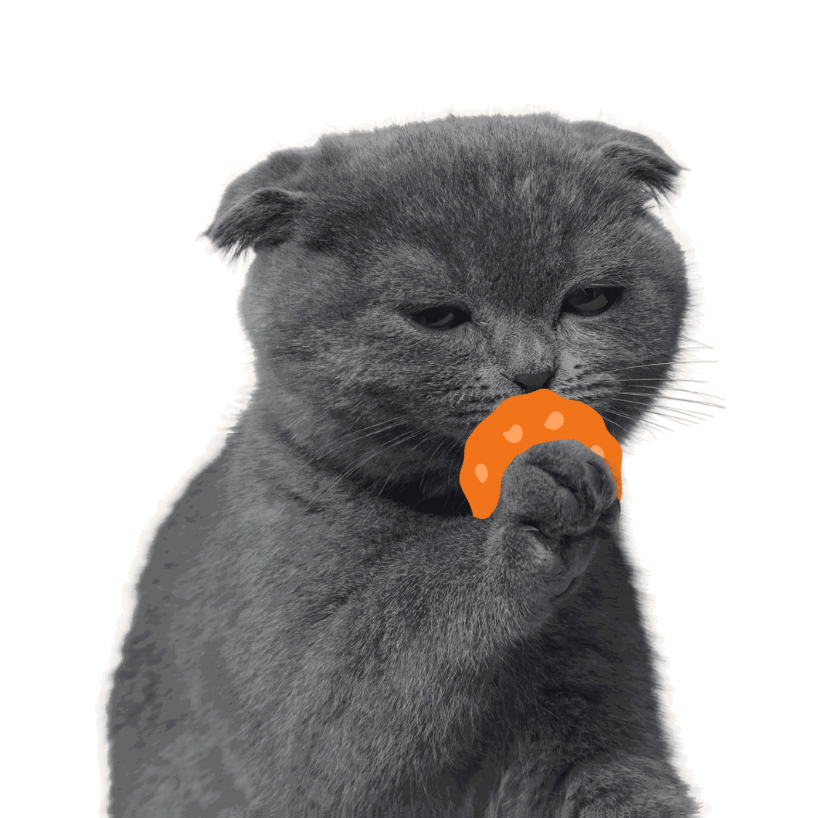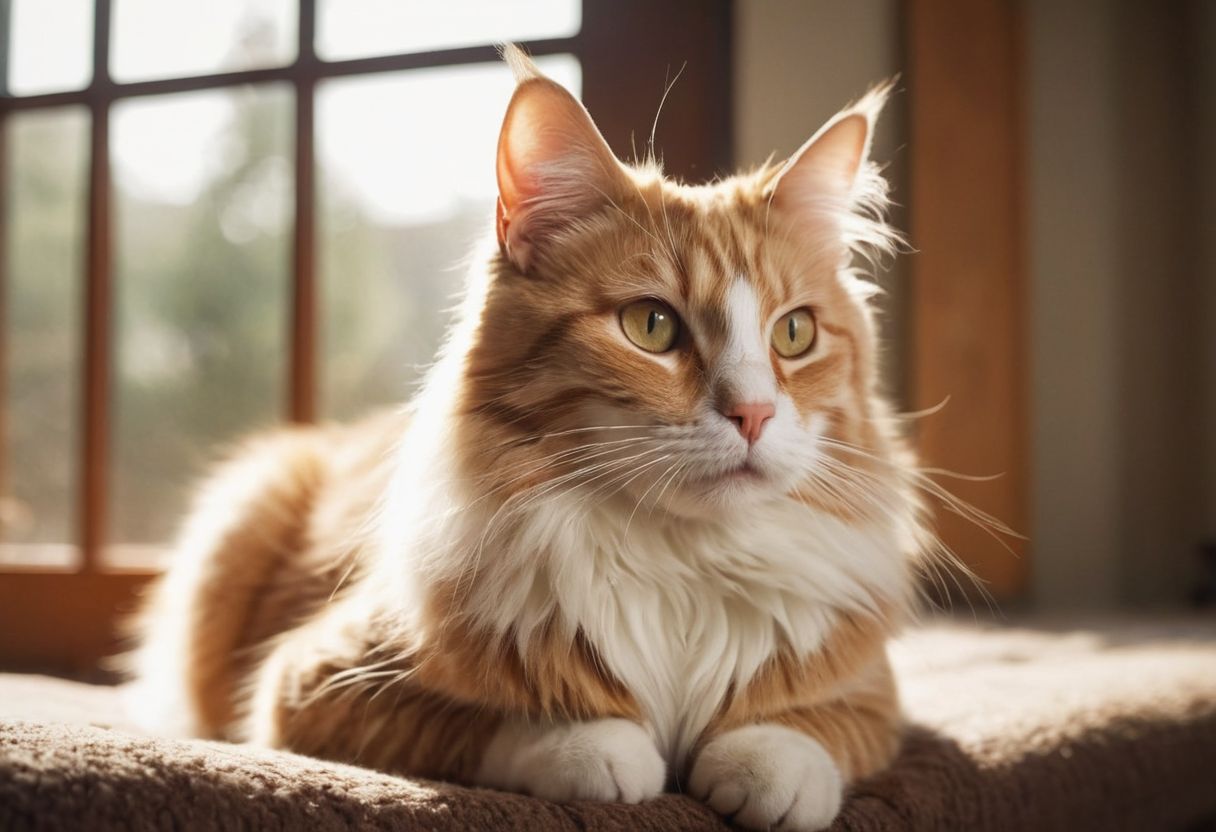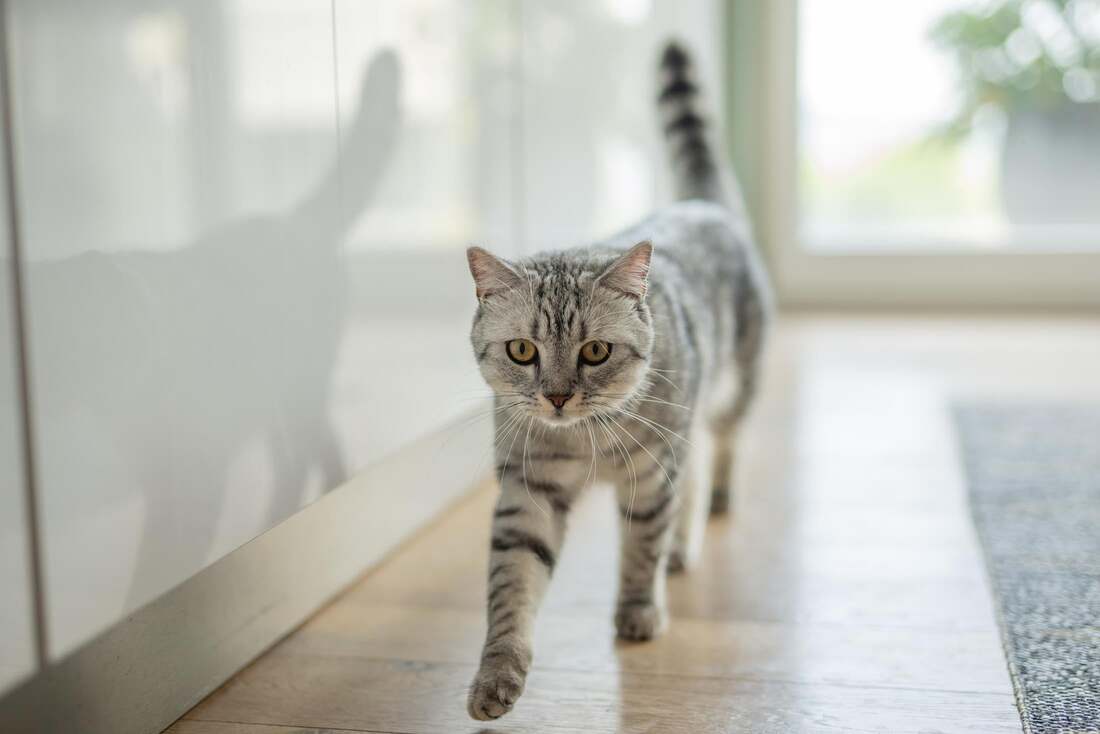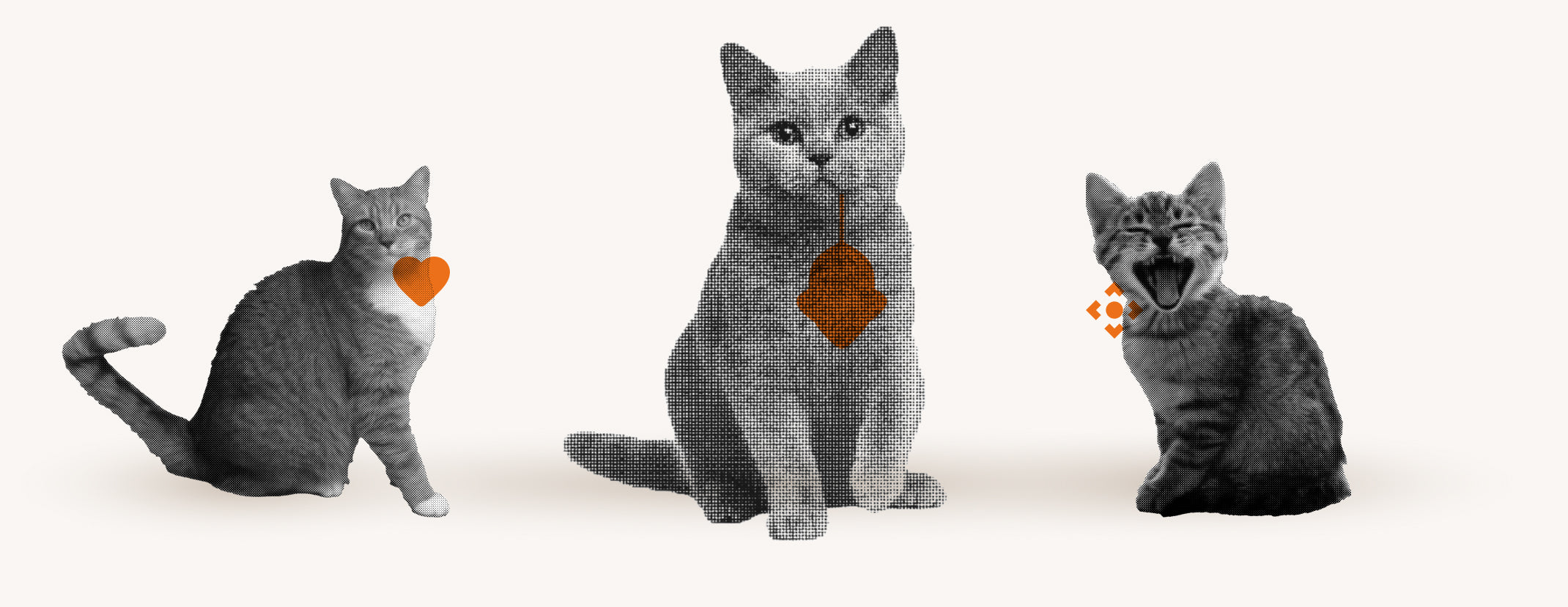Have you ever wished for a cat that would leave your furniture alone?
Scratching can be a real challenge for cat owners, especially if you love your home.
Although all cats have the potential to scratch, there are breeds such as the Russian Blue or the Siamese that are considered less likely to scratch.
In this blog post, you'll learn more about cats' natural scratching behavior, how to get them used to scratching posts, and which breeds are known to scratch less.
Why do cats scratch? Insight into natural behavior

Why do cats scratch? This behavior is deeply rooted in their instincts and serves several important functions. Firstly, scratching is part of personal grooming, as it helps to sharpen the claw and remove dead nails. Secondly, cats use scratching to mark their territory. They leave visual marks and release scents that come from special glands in their paws. This signals to other cats that the area is already occupied.
In addition, scratching is also an expression of stress relief and joy. It allows cats to get rid of excess energy and to stretch and strengthen their muscles. Scratching offers welcome physical activity, especially in an apartment where the natural urge to move cannot always be sufficiently fulfilled. Understanding why cats scratch is the first step to finding appropriate solutions for cats and cat owners and making their coexistence more harmonious.
Using the scratching post effectively – tips for getting used to it

A scratching post is not only a place for cats to care for their claws, but also a place to play and rest. To successfully get your cat used to the scratching post, it is important to choose the right location. A quiet corner, ideally with a good view of the room and near a window, is optimal. The scratching post should be stable and large enough for your cat to be able to stretch and climb completely.
Start by making the scratching post attractive to your cat. You can:
- Sprinkle catnip on it to attract your cat's interest.
- Attach toys to the scratching post that invite you to play.
- Play regularly next to the scratching post and reward your cat with treats.
This way you associate positive experiences with the scratching post, which makes it easier for your cat to get used to it.
Unusual Scratching Behavior – Causes and Solutions
Unusual scratching behavior can be an indication of various problems. Excessive scratching can be caused by skin irritations, allergies or parasites. In such cases, it is important to have the underlying medical problems examined and treated by a veterinarian. Psychological factors such as stress or fear can also trigger increased scratching.
To address noticeable scratching, you should:
- Check your cat's environment and minimize potential stressors.
- Provide sufficient opportunities for play and entertainment to avoid boredom and frustration.
- Establish regular routines and rest areas to give your cat security.
If problems persist, it may be helpful to seek advice from a behavioral therapist who specializes in cats.
The Importance of Socialization for Scratching Behavior

Socializing cats in their first months of life is crucial for the development of their behavior. When cats have positive experiences with people and other animals early on, they learn to trust and show less fear or aggression. This not only leads to a more relaxed coexistence, but can also help cats to be less inclined to scratch furniture or other objects. A well-socialized cat is often more balanced and shows friendlier behavior.
The interactions a young cat experiences shape its reactions and habits. Regular positive encounters with people, such as gentle petting and playing, build trust and bonding. This can lead to the cat feeling less stress, which in turn reduces the need to scratch. The goal of socialization should be to teach a cat that people are not a threat, but a source of comfort and security.
Cuddly cat breeds – less scratching, more love

Some cat breeds are known for being particularly cuddly and affectionate, which makes them ideal companions for people who prefer a calm and loving cat. These breeds include the British Shorthair, the Persian cat and the Ragdoll. These cats often seek closeness to their humans and show their loving nature not only by purring, but also by scratching less.
The Maine Coon and the Exotic Shorthair are also known for their calm and friendly nature. These breeds:
- form strong bonds with their caregivers
- are less active and therefore ideal for living in an apartment
- Due to their gentle nature, they show less destructive behavior such as scratching furniture
These characteristics make them particularly popular pets for families and individuals.
Cuddle time with cats – patience and its influence
Cuddle time with cats can be a wonderful way to build a deep bond, but it requires patience and understanding of the cat's individual needs. Not every cat will show their cuddly side right away. It's important to pay attention to the cat's signals and give them time to get used to being close. This process can build trust and lead to the cat scratching less as they feel safe and secure.
Positive reinforcement plays an important role in building a cuddly relationship. Reward your cat with treats or gentle strokes when she approaches you or relaxes on your lap. This reinforces the desired behavior and shows the cat that being close to her human is pleasant and rewarding.
Petting and its influence on the behavior of cats
Cats' response to petting can vary greatly depending on their personality and previous experiences. While some cats love to be petted extensively, others prefer only short and targeted touches. It's important to read your cat's body language and respect when she signals that she's had enough.
Regular, positive interactions can influence the cat's behavior and help reduce stress. The following points should be considered:
- Start by stroking the head and neck, as most cats prefer touching here.
- Avoid excessive eye contact as this can be perceived as a threat.
- Observe how your cat reacts to different types of touch and adjust your behavior accordingly.
These practices can help improve your cat's well-being and reduce unwanted scratching behavior.
Discover Flappies solutions
Flappies smart cat flap is the perfect solution for cat owners who want a clean home. Thanks to selective access control and prey detection by AI-supported camera, the system can detect when your cat tries to come into the house with prey. In such cases, the flap remains closed and the prey stays outside. This not only protects your home from unwanted guests, but also ensures that your furniture and furnishings are protected from scratches. The advantages of this technology are clear:
- no unwanted animals in your home
- Protect your furniture from scratches and damage
- a clean and hygienic environment for you and your family
To use the full potential of Flappie's cat flap, you should download the Flappie app . With this app, you can conveniently control the cat flap's settings from your smartphone. You will receive push notifications when your cat tries to come home with prey, and you can even view videos and photos of your cat taken by the integrated camera. So the Flappie app not only gives you control, but also exciting insights into your cat's life. Here are some of the app's features:
- remote control of access control
- Notifications and alarms for unwanted prey capture
- Access to photos and videos of your cat
Visit https://flappie.ch to learn more about this innovative solution and order your cat flap today.
Frequently Asked Questions
Which cats scratch the least?
Cat breeds such as the Russian Blue or the Siamese are considered to be less likely to scratch. The British Shorthair, the Persian cat and the Ragdoll are also known to scratch less because they are particularly cuddly and affectionate.
What is the calmest cat breed?
The Maine Coon and the Exotic Shorthair are known for their calm and friendly nature. They are less active and therefore ideal for living in an apartment.
What is the friendliest cat breed?
Breeds such as the British Shorthair, the Persian cat and the Ragdoll are known for their friendly and loving nature. They often seek closeness to their humans and show their affection by scratching less and cuddling more.
Which cat breed likes to cuddle the most?
The British Shorthair, the Persian cat and the Ragdoll are considered to be particularly cuddly breeds. They often seek the proximity of their humans and show their love by purring and less scratching behavior.





Share:
Traditional Siamese Cat: Origin and Character
Discover the diversity of the American cat breed